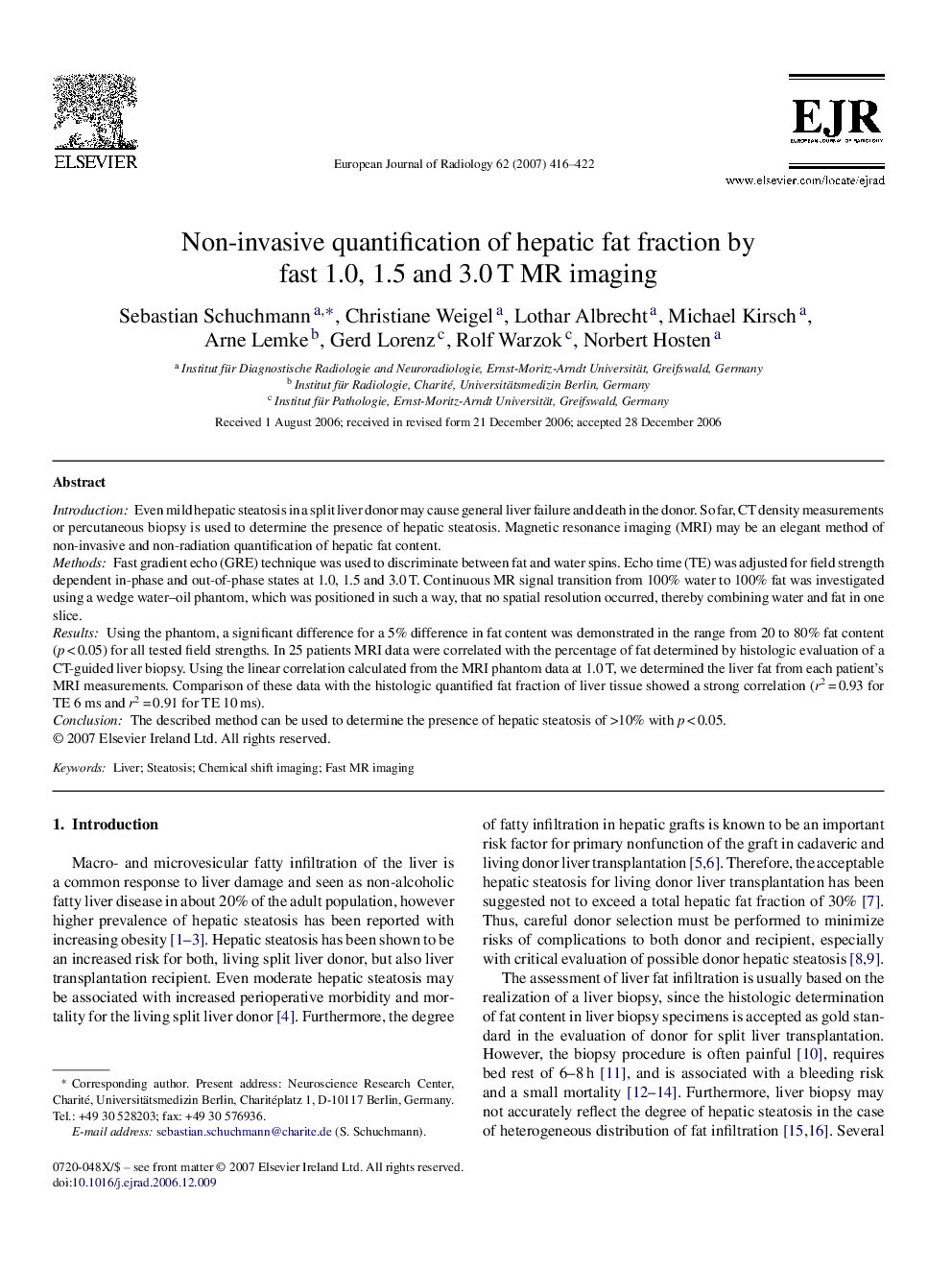| Article ID | Journal | Published Year | Pages | File Type |
|---|---|---|---|---|
| 4228164 | European Journal of Radiology | 2007 | 7 Pages |
IntroductionEven mild hepatic steatosis in a split liver donor may cause general liver failure and death in the donor. So far, CT density measurements or percutaneous biopsy is used to determine the presence of hepatic steatosis. Magnetic resonance imaging (MRI) may be an elegant method of non-invasive and non-radiation quantification of hepatic fat content.MethodsFast gradient echo (GRE) technique was used to discriminate between fat and water spins. Echo time (TE) was adjusted for field strength dependent in-phase and out-of-phase states at 1.0, 1.5 and 3.0 T. Continuous MR signal transition from 100% water to 100% fat was investigated using a wedge water–oil phantom, which was positioned in such a way, that no spatial resolution occurred, thereby combining water and fat in one slice.ResultsUsing the phantom, a significant difference for a 5% difference in fat content was demonstrated in the range from 20 to 80% fat content (p < 0.05) for all tested field strengths. In 25 patients MRI data were correlated with the percentage of fat determined by histologic evaluation of a CT-guided liver biopsy. Using the linear correlation calculated from the MRI phantom data at 1.0 T, we determined the liver fat from each patient's MRI measurements. Comparison of these data with the histologic quantified fat fraction of liver tissue showed a strong correlation (r2 = 0.93 for TE 6 ms and r2 = 0.91 for TE 10 ms).ConclusionThe described method can be used to determine the presence of hepatic steatosis of >10% with p < 0.05.
